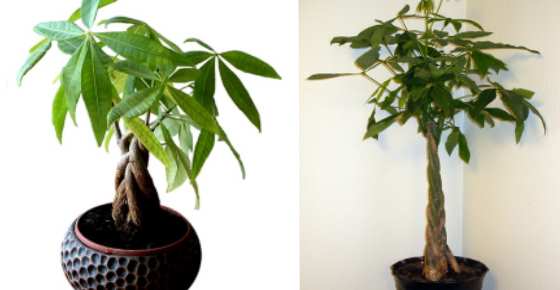Pachira aquatica, also known as the money tree, is a tree species believed to bring wealth and prosperity in Chinese Feng Shui. It is characterized by its glossy green leaves growing on a braided or twisted trunk. Due to its reputation for attracting riches and being low-maintenance, the money tree is a popular indoor bonsai plant.
To take care of a Pachira aquatica, it is best to plant it in well-draining soil and provide it with bright indirect light. It is important to only water the plant when the topsoil is completely dry and to maintain high humidity levels. The ideal temperature range for a money tree is between 53°F and 77°F (12°C – 25°C). Fertilizing the tree twice a year, in spring and fall, is also recommended.
The money tree belongs to the Malvaceae family, which also includes hibiscus, cotton, and cacao plants. Other names for this tree species include Malabar chestnut, Provision tree, Guiana chestnut, and French Peanut. In the wild, Malabar chestnuts can grow up to 60 feet (18 meters) tall. When grown outdoors, money trees produce spectacular flowers, but they rarely bloom indoors as houseplants. Typically, indoor money trees reach a height of 1 to 6 feet (0.3 to 1.8 meters).
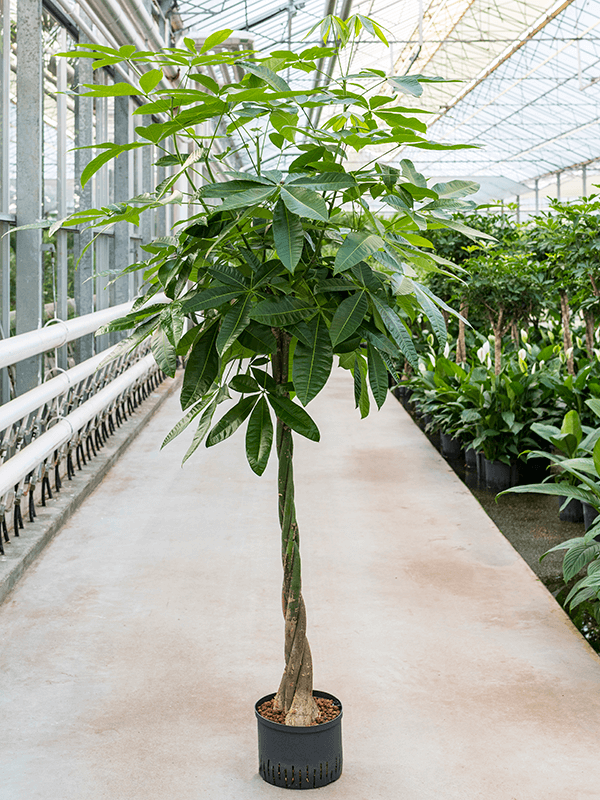
The left image showcases the natural growth of Pachira aquatica in the wild. Money trees, like Pachira aquatica, are commonly used as desk plants or shelf fillers and are popular indoor bonsai trees. The distinguishing characteristic of money trees is their large, lanceolate green leaves.
Each stem of the money tree produces five or six palmate-shaped leaves, with some lucky specimens producing seven leaves. Braiding five to eight stems together at the top of the money tree gives it a bushy appearance.
Types of Money Plants With Their Picture and Common Name
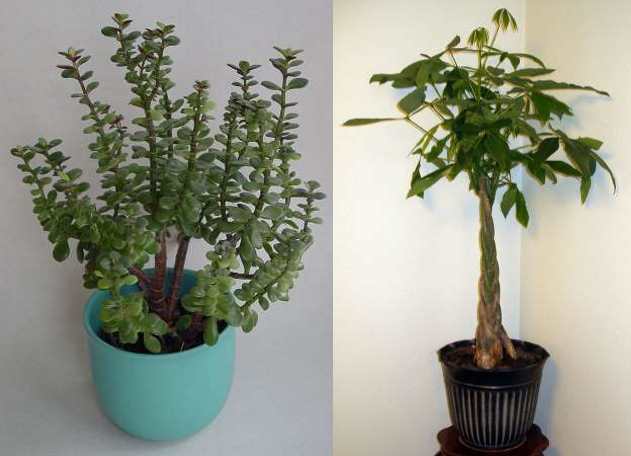
On the left is the tree-like appearance of Crassula ovata, also known as the jade plant or money plant. Meanwhile, the Pachira Aquatica, or money tree plant, has a twisted or braided trunk.
According to Chinese Feng Shui practitioners, the money tree is one of the two lucky plants that can attract wealth and prosperity. Twisting the branches of the money tree is believed to create positive energy and improve financial success.
Money plants are also said to prefer locations near doors or areas associated with financial activity, such as banks. Another Feng Shui money plant is the Jade Plant or Crassula ovata, which is also considered a lucky plant for improving financial luck. The jade plant, a type of succulent, is characterized by its coin-shaped leaves, robust woody stems, and shrub-like appearance, which are all associated with wealth.
Money Tree Bonsai
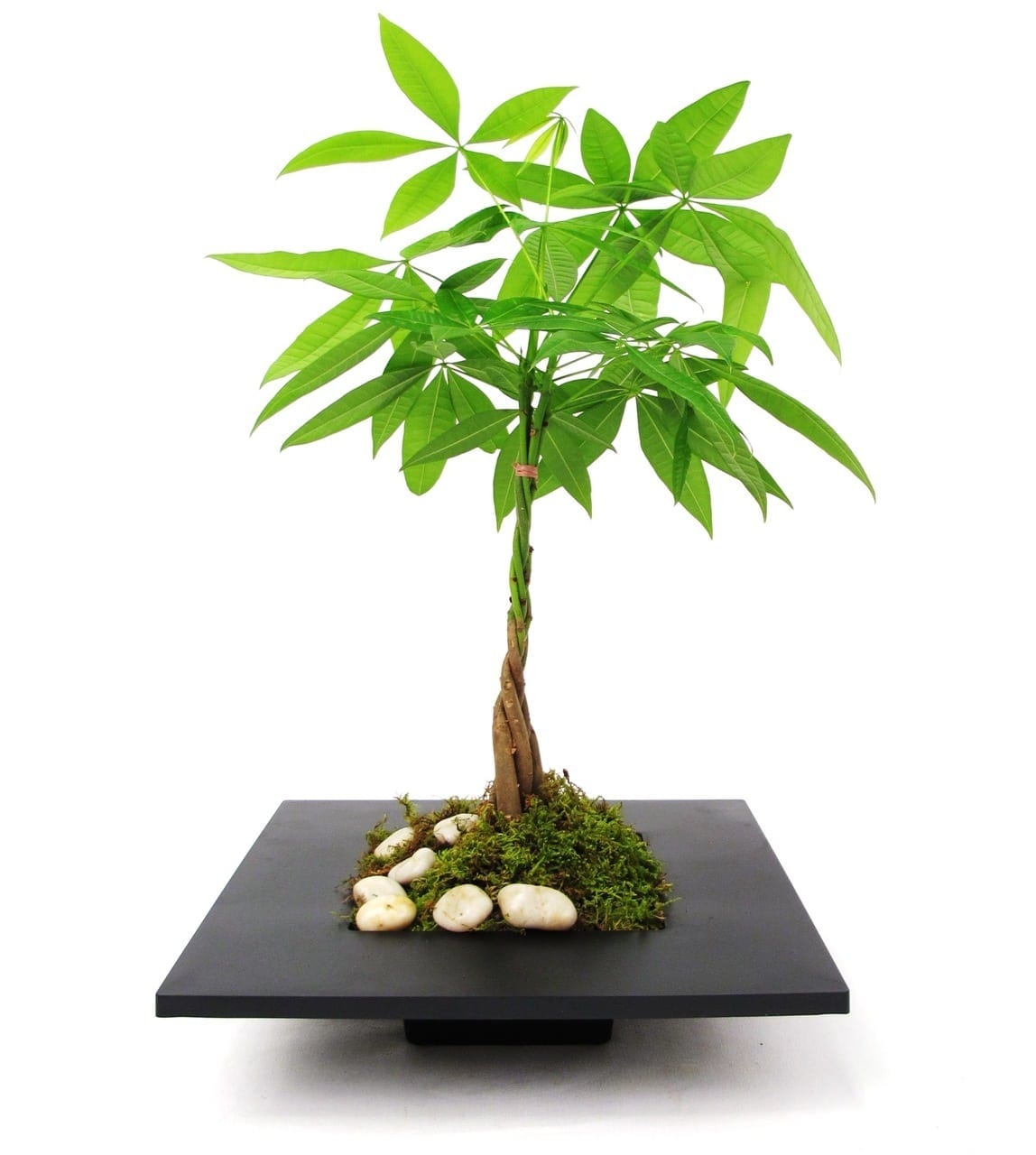
Pachira aquatica, commonly known as the money tree, is a popular indoor plant that is often grown as a bonsai with a braided trunk. The twisted and braided trunk of the money tree adds to its ornamental appeal. These dwarf indoor plants are often given as gifts with the belief that they bring good luck, wealth, and prosperity.
Due to their small size, money tree bonsai plants can be placed in any location that receives adequate sunlight. To create miniature bonsai trees, one can learn the art of braiding money tree trunks.
How to Care for a Money Tree (Pachira Aquatica)
If you want your money tree to thrive, it’s not just about relying on luck. With proper care and attention, your money tree can flourish for years to come. Even if you have a large money tree, its lush green foliage adds beauty and elegance to any room. So, let’s take a closer look at how to care for a money tree.
How to water a money tree (Pachira Aquatica)
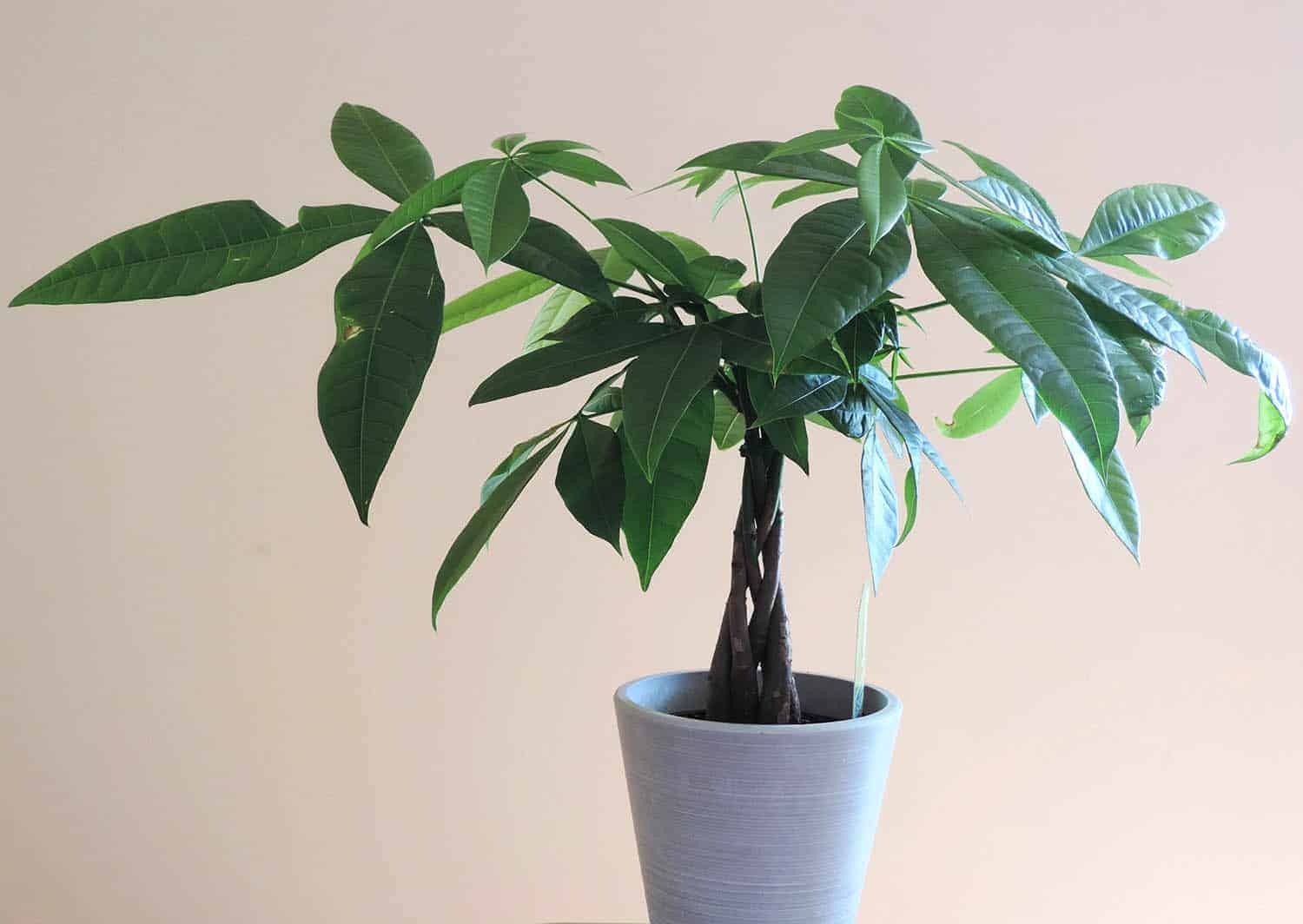
To ensure the health and longevity of your money tree, proper watering techniques are crucial. Overwatering can be detrimental to your plant, so it’s important to use well-draining soil to allow excess moisture to escape. Wait until the top inch of soil is dry before watering your money tree, and be sure to use rainwater or filtered water.
When watering, pour water into the soil until it drains out the bottom of the pot and allow it to dry out before watering again. Additionally, misting your money tree or giving it an occasional shower can help to maintain healthy humidity levels and remove dust from the leaves.
During the winter, only water your money tree when the soil feels particularly dry to the touch. If you notice leaves falling off, it may be a sign of overwatering, so allow the soil to dry completely before watering again.
Light requirements of Pachira Aquatica
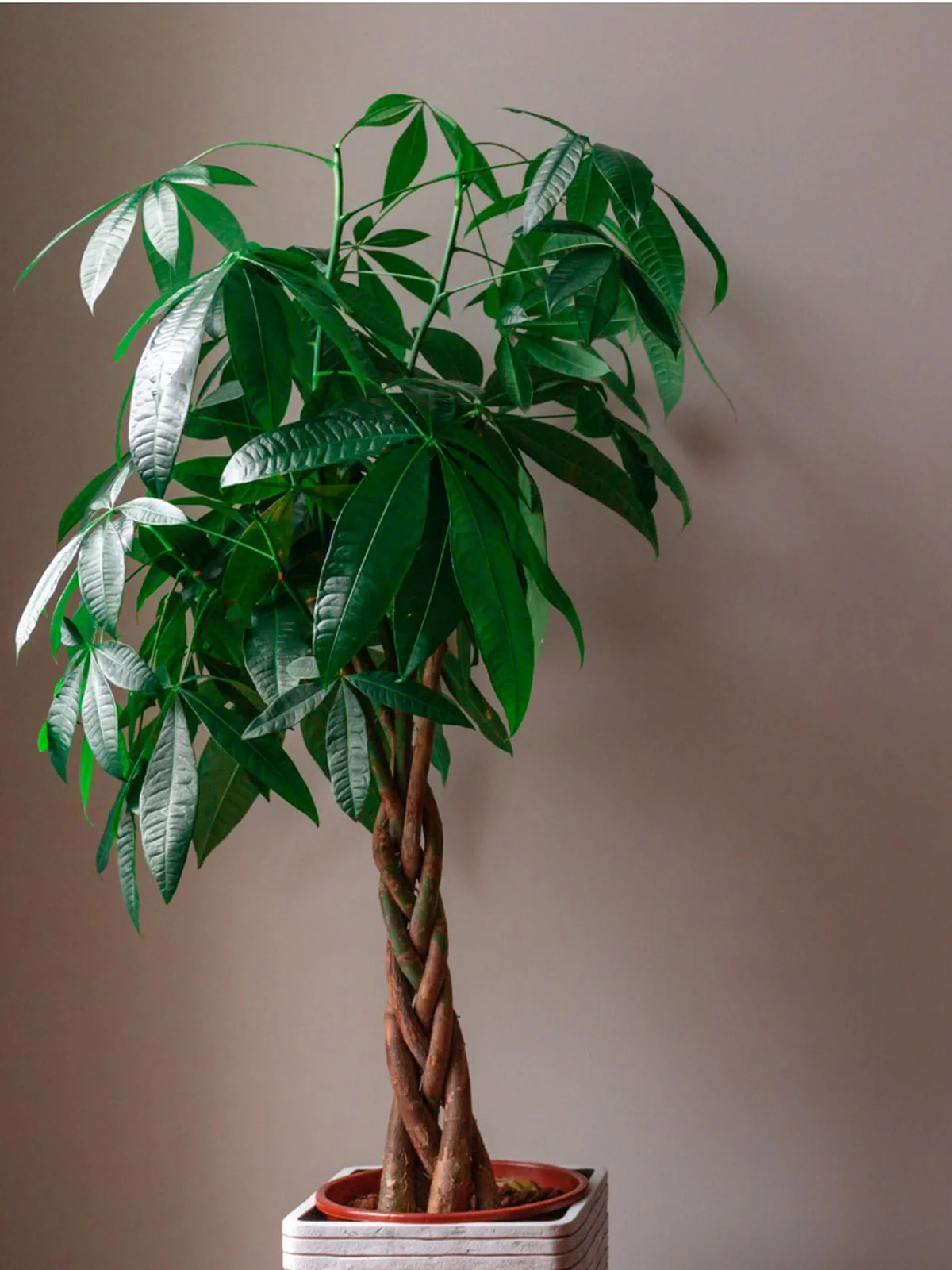
A Pachira Aquatica, or money tree, is a great indoor plant that thrives in bright, indirect light. The ideal location for a money tree in your home would be an area that receives some shade or indirect sunlight. It is recommended to rotate the plant every few weeks to ensure even growth. Money trees are also tolerant of low lighting conditions and can thrive in artificial light.
If you want to move your money tree to an area with more direct sunlight, it is important to do so gradually. This will help the tree acclimate and avoid any potential leaf scorching.
Temperature and humidity
Money trees, also known as Pachira Aquatica, are houseplants that are easy to care for and thrive in room temperature with high humidity. The ideal temperature range for these “good luck” trees is between 53°F and 77°F (12°C – 25°C). Money trees can be grown outdoors in USDA zones 10 and 11.
Some Feng Shui practitioners place these lucky trees at the front door to welcome wealth and prosperity into the home. Although money trees can withstand temperatures as low as 41°F (5°C), it is not recommended to plant them outside. If the plant starts to shed its leaves, it could be a sign of cold temperatures, and it should be kept above 77°F (12°C). Growth should resume when the weather improves in the spring.
Feeding
You only need to use bonsai fertilizer on your Chinese money tree houseplant occasionally to keep it healthy. To help the money tree grow properly, it only needs to be fertilized twice per year (in the spring and fall).
Repotting
Repotting your money tree every 2-3 years is recommended, especially when it starts actively growing in the spring. Choose a pot that is 2 inches (5 cm) larger than the existing one and has drainage holes at the bottom. For the soil, it is best to use quick-draining soil that is usually sandy peat-moss. It is essential to ensure that the roots of your money tree do not get waterlogged when grown in a pot.
Money tree plant pruning
Pruning is an essential part of maintaining a healthy and attractive money tree plant. It can help to promote the growth of lush foliage and regulate the height of the tree. The best time to prune your Chinese money tree is in the spring, as it will provide ample time for the plant to recover and grow during the warmer months.
Start by removing any branches that have grown too much foliage or are dead. You should also prune away any branches that have grown too close to the top or sides of the plant. As a general rule of thumb, make sure to cut around 1 inch (2.5 cm) above the tree’s “V” shape branches. This will help to ensure that your money tree maintains its shape and stays healthy.
How to Propagate a Money Tree
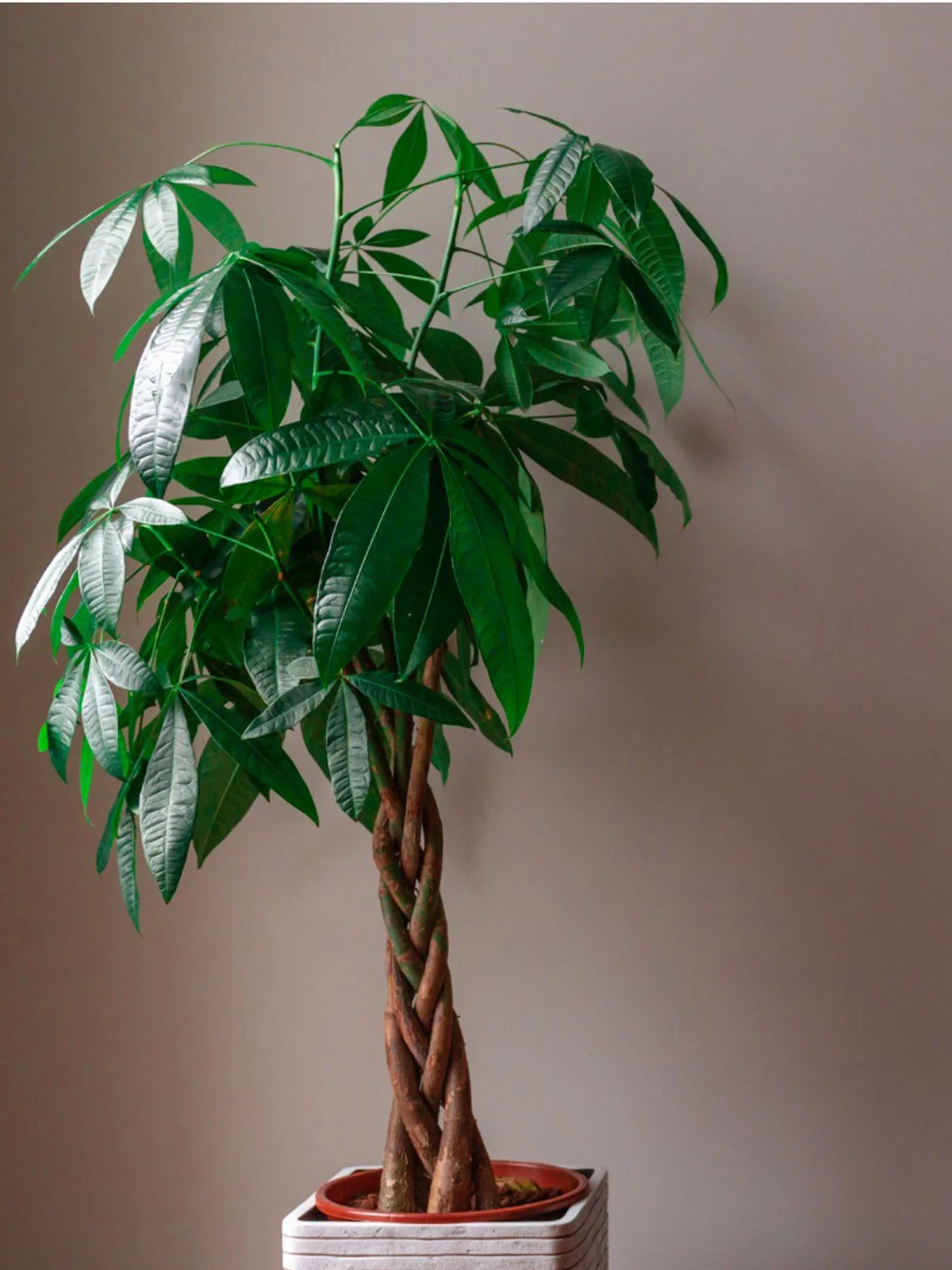
There are two methods for propagating Pachira aquatica (money tree), which are stem cutting and planting money tree seeds. During the summer, it is recommended to propagate your money tree using stem cuttings.
You can cut a 6-inch (15-cm) piece of stem that has 2 or 3 leaf nodes and dip the tip into a rooting hormone before planting it in a sterile rooting mix of peat moss and sand. Cover the container with a plastic bag to maintain humidity and keep the rooting mixture moist.
Alternatively, you can propagate the money tree using its seeds, which is the most reliable method. Soak the seeds in 0.4 inch (1 cm) of plant-based substrate and keep it in a warm, sunny location. When the money tree seedlings have grown big enough, repot them. After learning how to propagate a money tree, you can also discover how to braid it in the conclusion of this article.
Money Tree Plant Problems
There are certain issues that may plague these “good luck” house plants, despite your best efforts in caring for a money tree.
Money plant diseases
Money plants can develop root rot if they are overwatered or planted in soil that doesn’t drain well. If you notice mold or the plant is losing its vibrancy, it may be necessary to repot and trim off any dead roots. Overwatering can cause leaves to turn yellow or fall off. On the other hand, if your money plant has yellow leaves, it may be receiving too much sunlight. To remedy this, move the plant to a location that is well-lit but away from direct sunlight.
Money plant pests
Money plants, including Crassula ovata and Pachira aquatica, can also fall prey to common pests such as mealybugs, spider mites, and scale insects. To control mealybugs, you may spray the plant with water to wash them off the leaves. Alternatively, you can use natural insecticides such as neem oil. Spider mites often leave little spider-like webs on the underside of the leaves, which can be removed by wiping the plant clean and increasing humidity levels.
Scale insects may leave a sticky film on the leaves and brown bumps on the stems, which can be eliminated using a solution of rubbing alcohol, soap, and water.
Money Tree Plant – Frequently Asked Questions
How else can you keep an eye on your money tree? The following are some of the most common money tree care questions.
Why are leaves falling off my money tree?
If you find that your money plant is dropping leaves, it could be an indication of watering problems or too much exposure to direct sunlight. To address this issue, check the moisture level of the soil and adjust your watering schedule accordingly. If the soil is too dry, water your plant more frequently, and if it is too moist, reduce the frequency of watering. You can also move the plant to a brighter location that receives indirect sunlight. With proper care and attention, money tree leaves will usually regrow quickly.
Does a money tree plant braid itself?
Money plants have stems that are simple to twist but not to braid. To boost the ornamental value of landscaping or as a houseplant, growers braid young flexible trunks. If you want to bring wealth and success into your life, a braided money tree is another important Feng Shui plant.
How to braid a money tree?
Garden centers typically sell money trees with 2-8 stems, but you can also braid the stems yourself if you grow your own plant. To create an auspicious plant for your home, wait until the young stems are at least 14 inches (35 cm) tall before braiding.
Gently twist the stems together to create a French braid, stopping a few inches below the leafy section of the stem. Secure the braided stems with string and tie them to additional support stalks on either side of the braided tree. After a few months, the braided stem of the Pachira aquatica should be strong enough to support itself.
Where is the best place to place a money tree?
Money trees thrive in bright areas of your home, with bright natural light but no direct sunlight. It’s also important to maintain a constant temperature in the room without any drafts for your money tree to grow best.
According to the principles of Feng Shui, money trees should be placed in the “money areas” of your home or business to attract wealth and prosperity, which is typically in the southeast quadrant. Feng Shui adherents also place money trees in the east side of homes to invite good health.
Are money trees poisonous?
Money trees are believed to bring good fortune when kept inside homes, and they are safe for humans to handle. In tropical countries where Pachira aquatica trees grow outdoors, the nuts are roasted and have a flavor similar to chestnuts. Unlike other jade plants, the money tree is not poisonous to pets. However, according to some reports, cats may experience stomach discomfort if they consume the green leaves.
Can I grow my money tree outside?
Yes, it is possible to grow money trees outdoors. If you live in USDA zones 9b to 11, you can plant money trees in pots by your front door or on patios. Alternatively, you can plant them in your garden under partial shade in a well-drained area.
Why is my money tree-top heavy?
When your money tree has tall stems and a lot of leafy foliage, it can become unstable. To make your money tree more secure, consider trimming back some of the branches.
